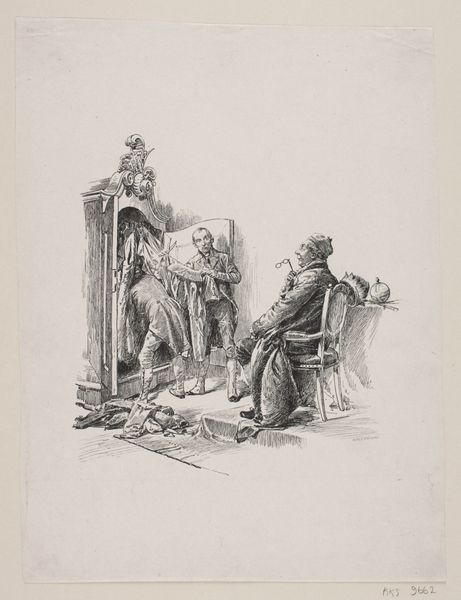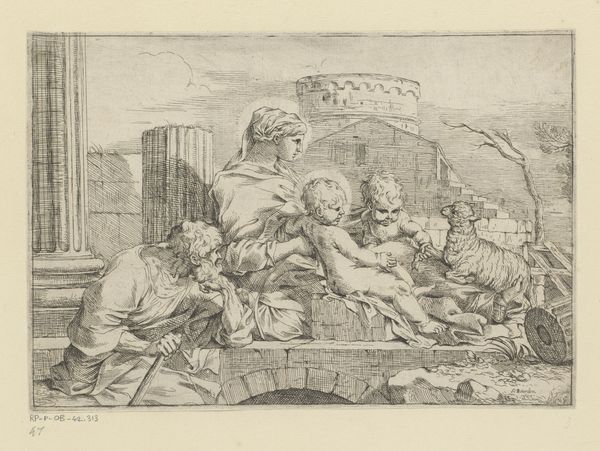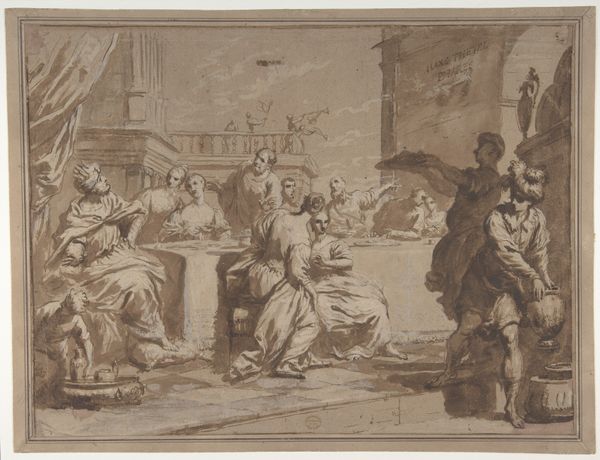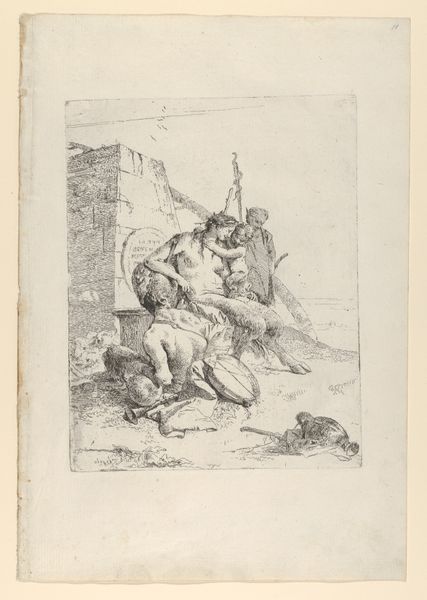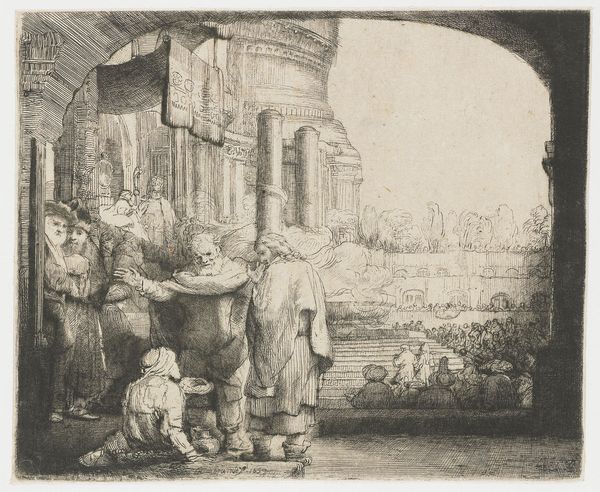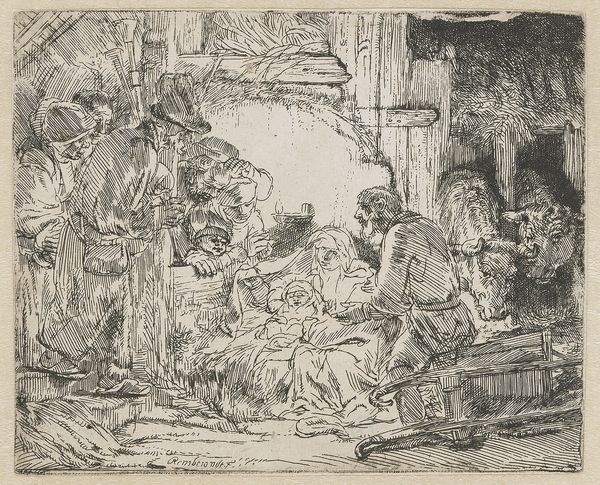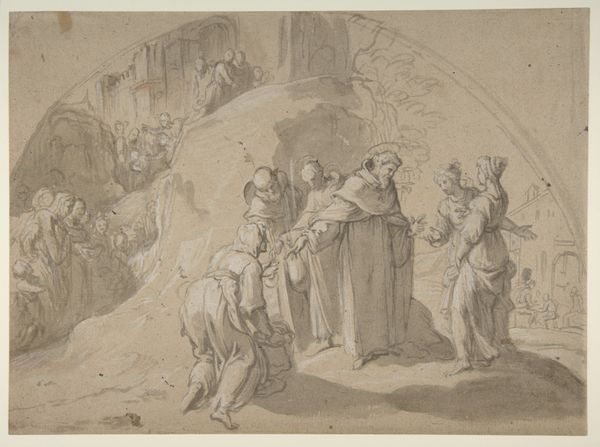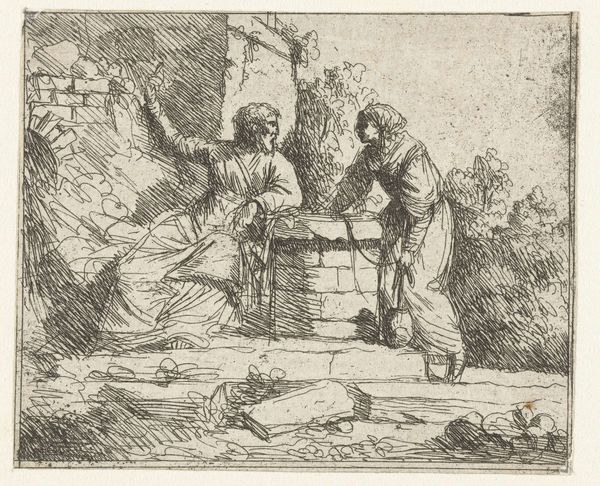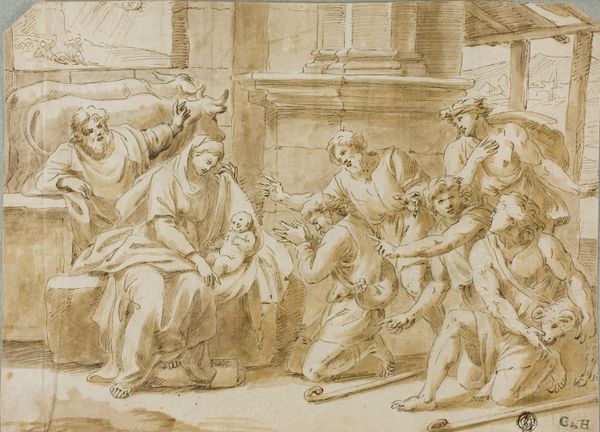
Copyright: National Gallery of Art: CC0 1.0
Curator: Giovanni Battista Tiepolo, likely around 1785, etched this work titled "Seated Youth Leaning Against an Urn." The scene is rendered in intricate lines, showcasing Tiepolo's mastery of the etching technique. Editor: You know, it hits me right away as profoundly melancholic. That leaning youth…almost crushed by the weight of that urn. It's as though all the world's sadness is seeping right into him. Curator: It's precisely that pervasive melancholy that links it so compellingly to discourses of historical loss. Think about it—the late 18th century saw a profound questioning of power, a disruption of traditional social structures. Tiepolo captures that collective grief, using the urn as a clear symbol of the past. Editor: True, that urn *is* rather grand and domineering, isn't it? Makes me wonder what grand tales it could tell, or what forgotten secrets it holds, right? Is it really just "loss," or perhaps some quiet reflection, too? Maybe there's something beautiful there amongst the sad. Curator: Precisely! And if we read the seated youth as a representation of the burgeoning Enlightenment ideals—youth, progress, questioning of traditions—then the urn symbolizes what is left behind in this transitional phase, sparking both regret and anticipation of progress. Also, the very depiction of mourning was fashionable at that time, influencing dress and art. Editor: Like a vintage filter on the cusp of the future? Okay, I'm tracking. Now, there's the rest of the figures almost like secondary afterthoughts fading into the background. It kind of underscores our loner protagonist. Or is he really a victim? Curator: Perhaps the “victim” is a reductionist reading; considering theories of intersectionality might lead to an understanding that everyone suffers or profits within hierarchical power dynamics. We could see the figure not simply as one undergoing grief but in complex negotiations with structures of the past. What choices does the character have in that instance? How do they negotiate or push back in imperceptible ways? Editor: All the best dramas leave you pondering those things! Well, that little melancholic journey really expanded my sense of the piece. Thanks for the insight. Curator: The pleasure was all mine! I am always captivated when it’s possible to look past and toward new, relevant meanings in old images.
Comments
No comments
Be the first to comment and join the conversation on the ultimate creative platform.

